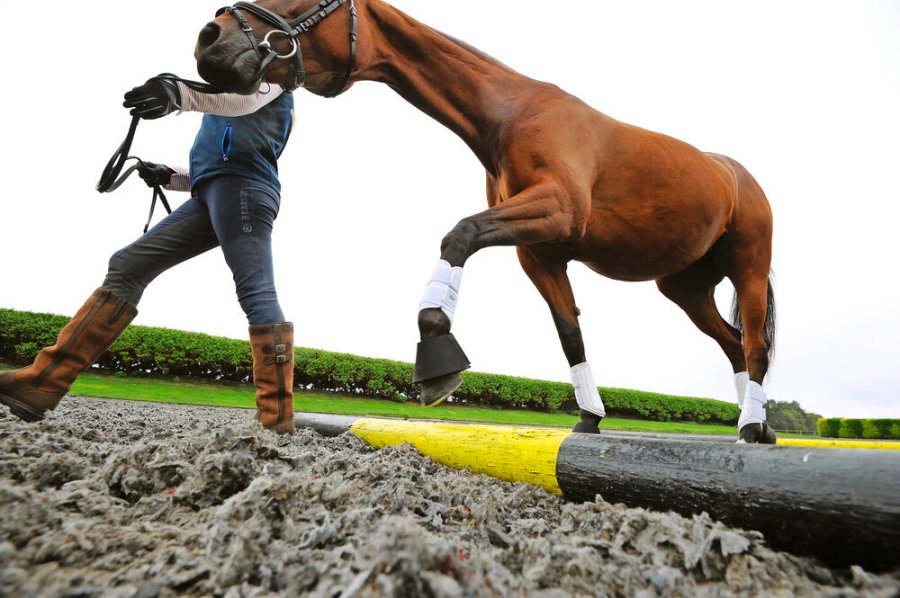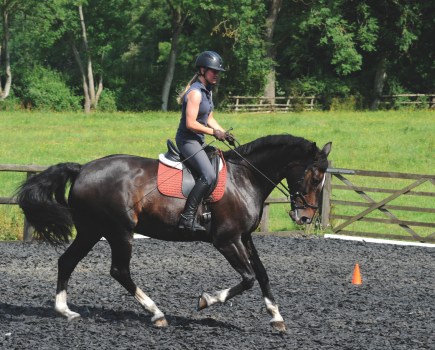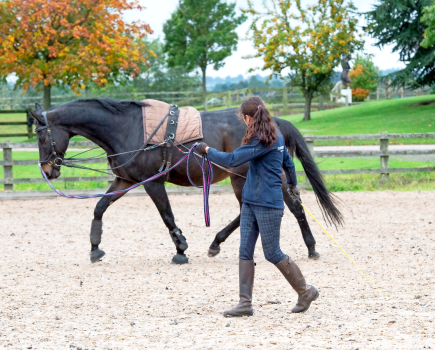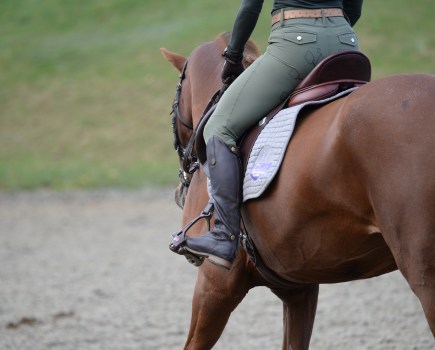Sports therapist Laura Payne explains the advantages of in-hand polework exercises and her golden rules for effective polework.
Polework exercises are a simple and effective method of helping to strengthen and condition your horse without excessive concussion on joints and limbs.
It’s a great way to improve his natural balance and self-carriage. If your horse is happy in his body, he will be willing to move forward and be more confident in his stride.
Problems arise when a horse is repetitively worked in the same way over a period of time, and instead of improving and strengthening, injuries occur due to repetitive strain and over-working tired, restricted muscles.
I use polework as a means of identifying where a horse wants to naturally put himself. That’s to say, is he left or right-sided? Is he straight? What muscles does he struggle to engage, and is this because he doesn’t know how to use them, or because he doesn’t want to due to strain or pain?
Alongside manual therapy I use polework on a daily basis for injury prevention, strength building and rehabilitation — rebuilding neuromuscular pathways that have come into misuse for whatever reason.
I predominantly do these polework exercises in-hand, in walk, as this is far more difficult and highlights where the horse is struggling — basically, if he can’t do them in walk, he won’t do them well in trot.
You want your horse to feel he’s able to do the exercises — yes, he may struggle at times to sort out his stride or where to put his feet — but we don’t want to set him up to fail. So less is more. Start with a few poles on the ground and once he can do these without touching them, either raise the height or add another pole, but never both at the same time.
Laura’s eight golden rules for polework
- Always warm up your horse for 10 minutes before you start.
- Remember, walk is best.
- Introduce one exercise at a time for five minutes only, two or three times a week, then build up to 15 minutes.
- Start with just two or three poles and only add in more when your horse doesn’t touch any of them.
- Repeat exercises equally on both reins and learn to lead from both sides.
- Allow a stretch between exercises.
- You don’t need to use gadgets. Stick to simple exercises which make your horse use his body correctly.
- Don’t forget to cool down afterwards.









